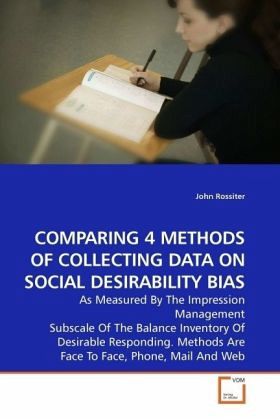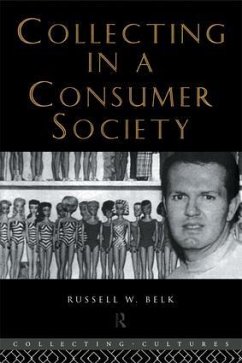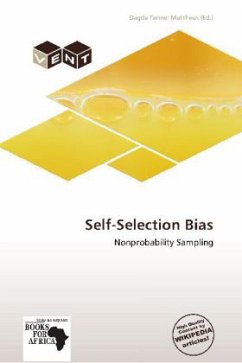
COMPARING 4 METHODS OF COLLECTING DATA ON SOCIAL DESIRABILITY BIAS
As Measured By The Impression Management Subscale Of The Balance Inventory Of Desirable Responding. Methods Are Face To Face, Phone, Mail And Web
Versandkostenfrei!
Versandfertig in 6-10 Tagen
51,99 €
inkl. MwSt.

PAYBACK Punkte
26 °P sammeln!
Four different data collection methods (face to face interviews, telephone interviews, mail surveys, and Web-based surveys) compared Social Desirability Bias (SDB). This study used Multiple Comparison tests and a randomized post-test only control-group design. No SDB differences were found among methods. For SDB no gender (2-factor), ethnicity (2-factor), nor was a gender and ethnicity (3-factor) interaction found. This study was more rigorous than other studies because 13 known extraneous influences were controlled for and two more were avoided. Effect sizes ranged from .002 to .029. Implicat...
Four different data collection methods (face to face interviews, telephone interviews, mail surveys, and Web-based surveys) compared Social Desirability Bias (SDB). This study used Multiple Comparison tests and a randomized post-test only control-group design. No SDB differences were found among methods. For SDB no gender (2-factor), ethnicity (2-factor), nor was a gender and ethnicity (3-factor) interaction found. This study was more rigorous than other studies because 13 known extraneous influences were controlled for and two more were avoided. Effect sizes ranged from .002 to .029. Implications are: SDB need not trouble researchers when comparing the 4 methods and SDB may be decreasing over time. Suggestions for future research include (1) studies between non-published and published studies; (2) meta analytic method comparisons over well-established constructs; (3) meta analytic studies on SDB over time; (4) measurement invariance of the 4 methods on SDB; and other suggestions.












